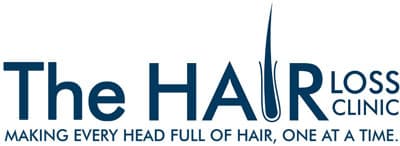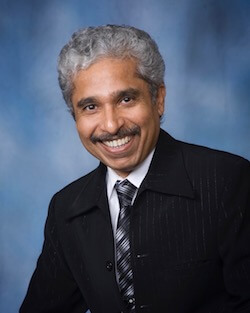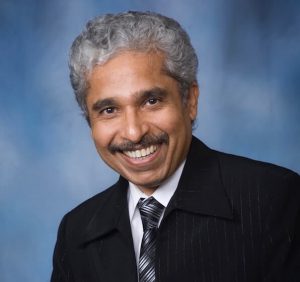
Medical treatments for Hair Loss
Hair loss is a common and absolutely natural process. Losing a few strands of hair daily is normal. However, sometimes this normal hair loss can turn into an absolute nightmare when one starts shedding hair constantly. What can be done then? Is there a viable and safe solution to this hair loss problem?
It is a common misconception that the only solution for hair loss involves surgery! A lot of people are afraid of approaching a Trichologist because they believe the doctor will push them towards hair transplant. At The Hair Loss Clinic, we reassure our patients that hair loss is a common issue and not everyone needs to go under the knife to solve it!
Dr Balvant Arora, our gifted and award-winning Board Certified Plastic Surgeon, recommends different types of medical solutions to improve the quality of your hair and restore it faster. The Hair Loss Clinic’s medical treatments not only focus on hair restoration but also on the cycle of hair growth. We want to transform your thinning hair into dense, shining locks with non-invasive medical solutions.
Our medical hair restoration remedies include the use of topical treatments, therapeutic local application devices and oral medicines. The device-based therapy will be performed only under medical supervision at our clinic.
Dr Balvant Arora stresses taking the medications in the right quantities and at the right time as prescribed to get the best results.
All the medications prescribed at The Hair Loss Clinic are US FDA approved.
Here is a list of the medications that can be used in order to counter hair loss process:
FINASTERIDE
- Finasteride is the only approved oral medicine in order to treat androgenetic alopecia. It generally works by blocking the conversion of testosterone to DHT (dihydrotestosterone).
- The dosage usually involves 1 mg of the tablet to be taken orally at the same time daily. Although this is the usual dose, it is necessary to still confirm the same with the doctor.
- The results of Finasteride are generally visible after at least 3 months of daily usage.
- It results in stopping hair fall in about 83% of patients and leads to regrowth of hair in about 66% of patients.
Precautions and side effects:
There are a few precautions that must be taken while taking this medication. Also, although very rare, there are a few temporary side effects of the medication.
- Finasteride must be taken only by men. It is not suitable for premenopausal women and children.
- Pregnant and breastfeeding women must not handle a broken finasteride tablet as it may hamper the growth of the infant baby.
- A complete medical history along with whatever allergies a person has must be told to the doctor in order to understand the effects of the medicine better.
- It is necessary to keep the medication in usage as stopping it may result in the loss of noticed hair growth within 12 months.
- Although there are no extreme or serious side effects to this medicine, a decreased sexual drive and effect upon the ejaculation quantity is noticed in some men. This is often temporary.
- Finasteride causing prostate cancer is highly unlikely with a dosage of 1 mg.
- One must stay in touch with the doctor if any symptoms or side effects prolong.
It is absolutely necessary to follow the instructions of the doctor to the word in order to avoid any side effects and have the best and long-lasting results.
MINOXIDIL
- Minoxidil is generally available as Rogaine. Minoxidil 2% or 5% solution or foam, are approved in the treatment of both female and male pattern hair loss.
- Minoxidil improves blood supply to hair follicle and prolongs the anagen phase, which is the phase of active growth. It is also believed that it interferes with potassium channels of hair follicle cells and inhibits the action of DHT.
- Minoxidil needs to be used as directed by the doctor or as given on the packaging. Generally, the required amount of dosage is 1 ml. It is to be applied on damp scalp generally twice a day (in the morning and at night).
- During the treatment, you may notice a slight increase in hair fall. This is a good sign of the action of the medicine as the older hair is gradually replaced. You should not discontinue the usage. It will take at least 6-8 weeks to stop the hair fall and at least 4 months for visible hair regrowth. The hair will also start growing longer and thicker.
- When used continuously, approximately 52% lost hair can regrow over a period of one year. If at any point, the usage is discontinued, you will be back to the starting point over a period of 6-12 weeks.
Precautions and side effects
- It is necessary to know that minoxidil must be applied only on a healthy scalp. Applying it on an infected or sunburned scalp might have negative consequences
- There has been no study to understand the effects of minoxidil on pregnant and breastfeeding women. So, pregnant and breastfeeding women must avoid the use of minoxidil in any case.
- The most common side effects include dry, itchy scalp. Some may notice excess facial hair growth. This growth disappears within 4-6 weeks after the use is stopped.
DUTASTERIDE
- Dutasteride is a medicine that works by blocking both the enzymes responsible for conversion of Testosterone to Dihydrotestosterone (DHT)
- It rather has more potency than finasteride. However, finasteride is the only FDA approved drug that helps to counter androgenetic alopecia.
- The side effects of both finasteride and dutasteride are pretty same; however, very rare.
- Generally, dutasteride is used only when finasteride has failed to give the results.
LOW LEVEL LASER THERAPY (LLLT)
- Low-Level laser Therapy (LLLT) is a novel method which makes use of clinical strength laser technology. It is often also referred to as red light therapy and cold laser therapy.
- It delivers photons/energy to the scalp tissues and which is absorbed by the weak cells to spurt hair growth. This invigorates the blood circulation and stimulation as well as restores hair shafts.
- It is an absolutely pain-free and non-invasive process. It is generally recommended that the LLLT should be given for 8-10 minutes. The therapy should be continued for 4-8 months to see some appreciable results.
- To learn more about LLLT please refer to our page on LLLT
PLATELET RICH PLASMA (PRP) TREATMENT
- PRP therapy involves drawing out blood from the patient’s, centrifuging it and extracting only Platelet rich plasma and then injecting it in the scalp. This gives the hair follicles great-quality growth factors and stimulates hair growth.
- The PRP is injected in the scalp at the level of hair follicles.
- It does not have any side effects as the person’s own blood is used to stimulate the growth of hair follicles
- PRP at The Hair Loss Clinic is a minimally invasive and absolutely safe process
- You can learn more about our PRP therapy on this page
BIOTIN
- Many times, the primary cause for alopecia or hair loss is imbalanced nutrition.
- Biotin is a B complex vitamin which has shown excellent results in terms of hair growth.
- It is advised as a supplement in many cases.
SAW PALMETTO
- Saw Palmetto is a plant with small berries which has been used as herbal remedies for many medical conditions. It has been used by Native Americans for hundreds of years as a remedy for hair loss.
- It helps to inhibit DHT conversion, the hormone responsible for androgenetic alopecia in males.
PROCAPIL TM-SEDERMA
- This is a local application lotion with multiple ingredients that inhibit DHT and strengthen the hair support system.
- It delays the hair loss process. 4-6 months of continuous application on scalp is required to see visible results.
Dr Balvant Arora not only focuses on the treatments but also has a holistic approach that helps patients in altering their nutritional habits in a way that is conducive to hair growth.
In case you notice hair loss, we invite you for a one on one consultation at The Hair Loss Clinic with Dr Balvant Arora, Board Certified Plastic Surgeon with expertise in Hair Restoration, who will effectively guide you on the subject.

Hair loss may be a common issue that many people of different ethnicities face, but the factors that contribute to the baldness/alopecia can be different
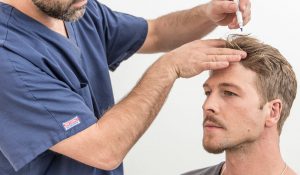
Until a few decades ago, we were taught to accept hair loss and balding as a natural irreversible state. Even now you may come across
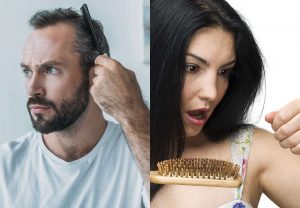
Causes of Hair Loss Has brushing your hair become your latest nightmare? Do you see strands of hair on your pillows too? Hair fall and
